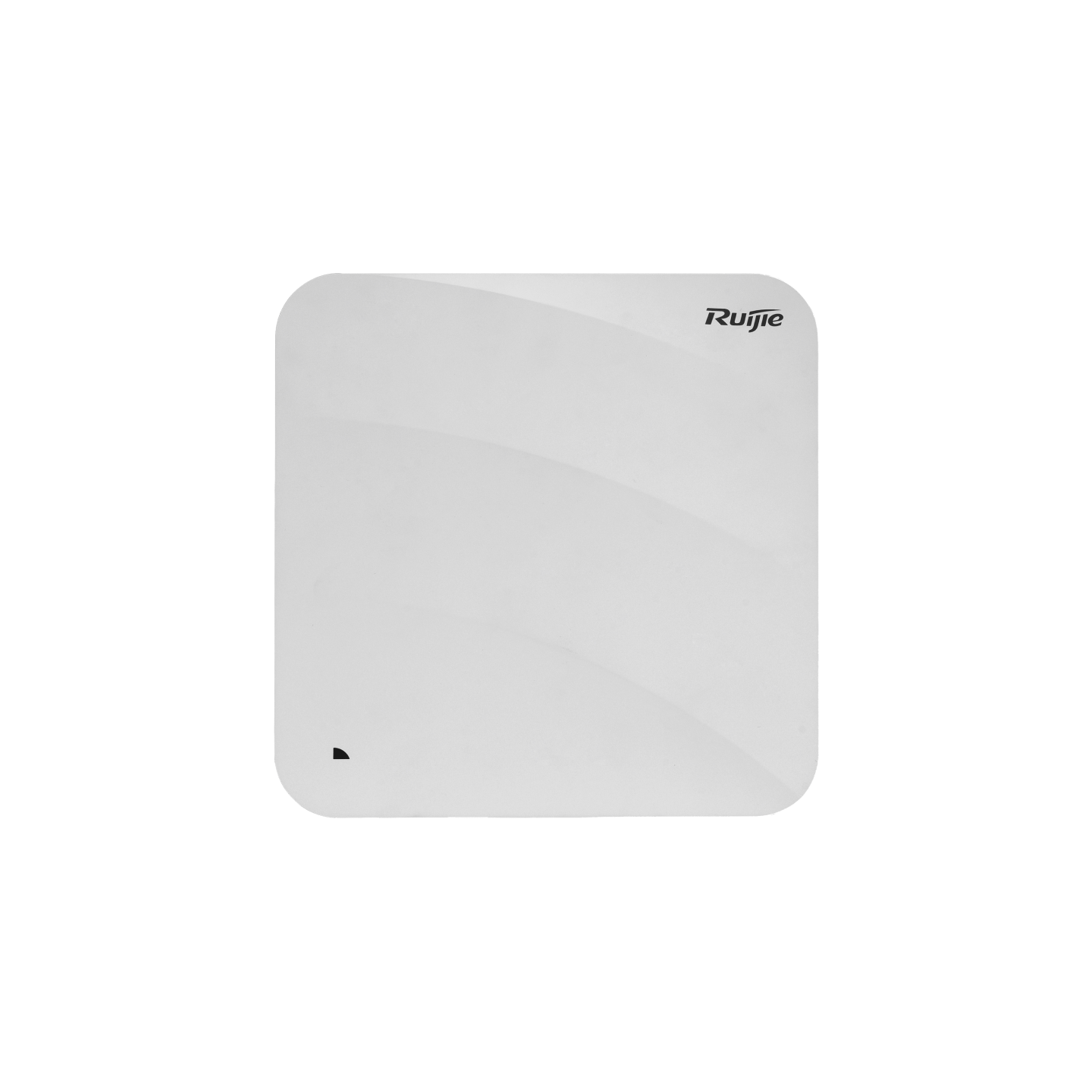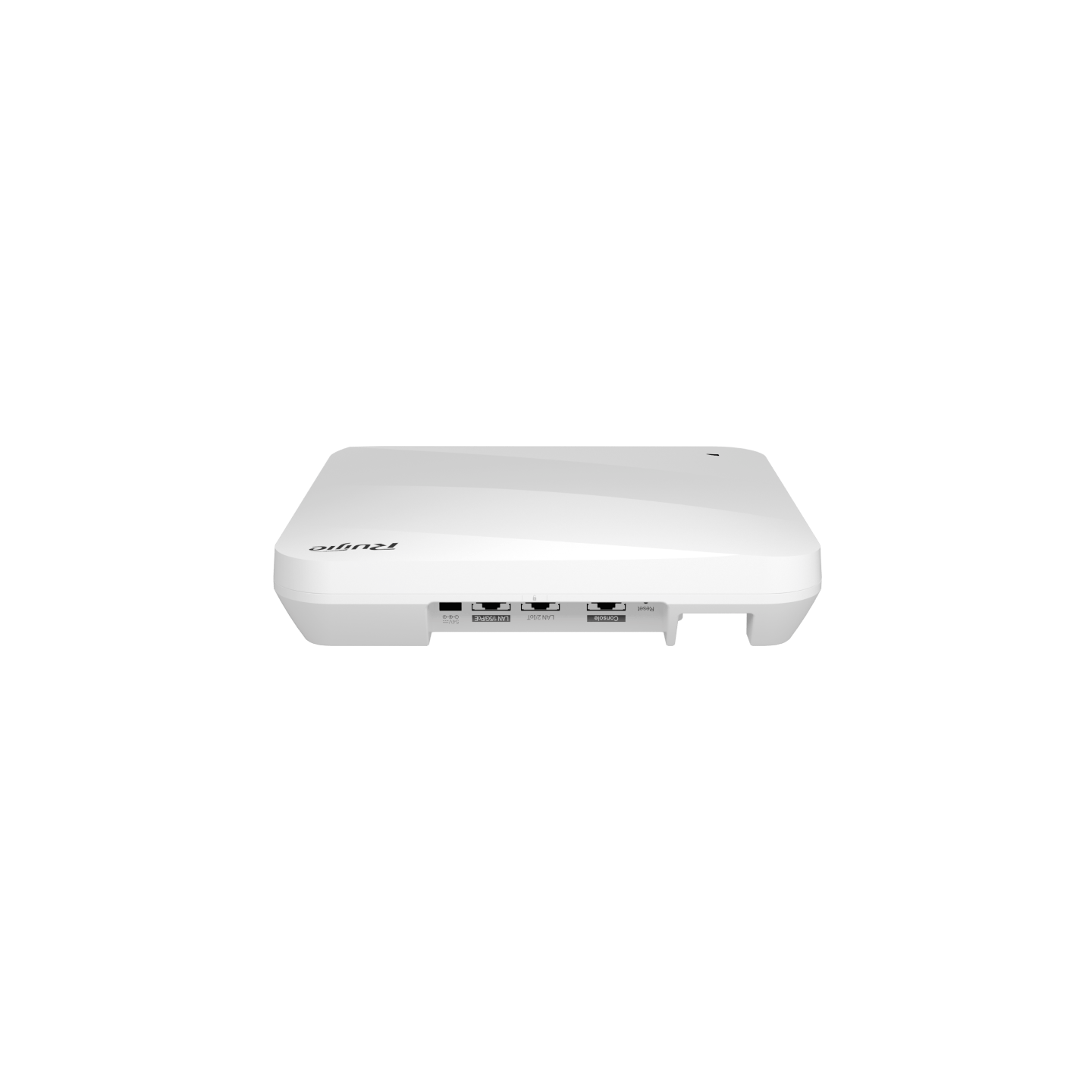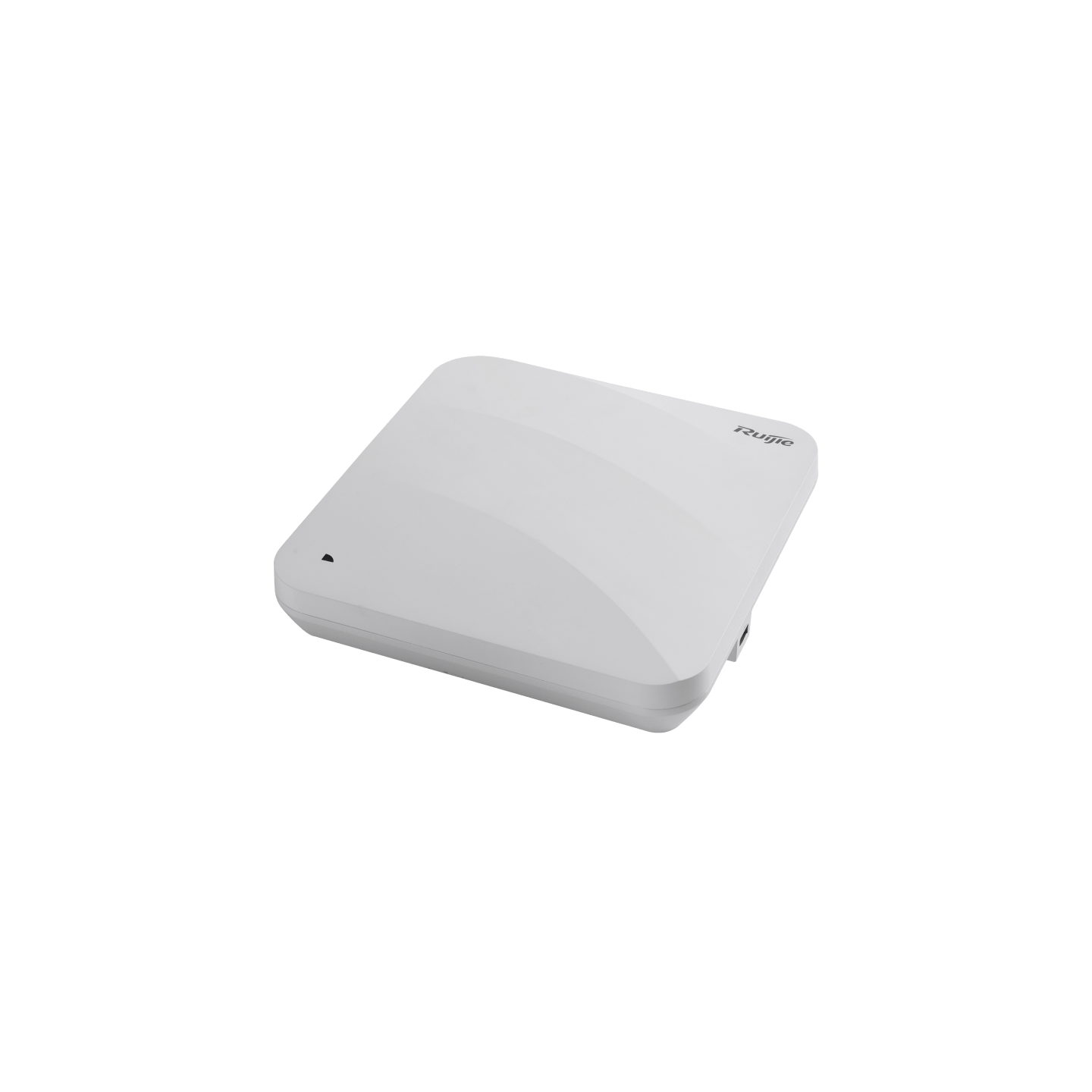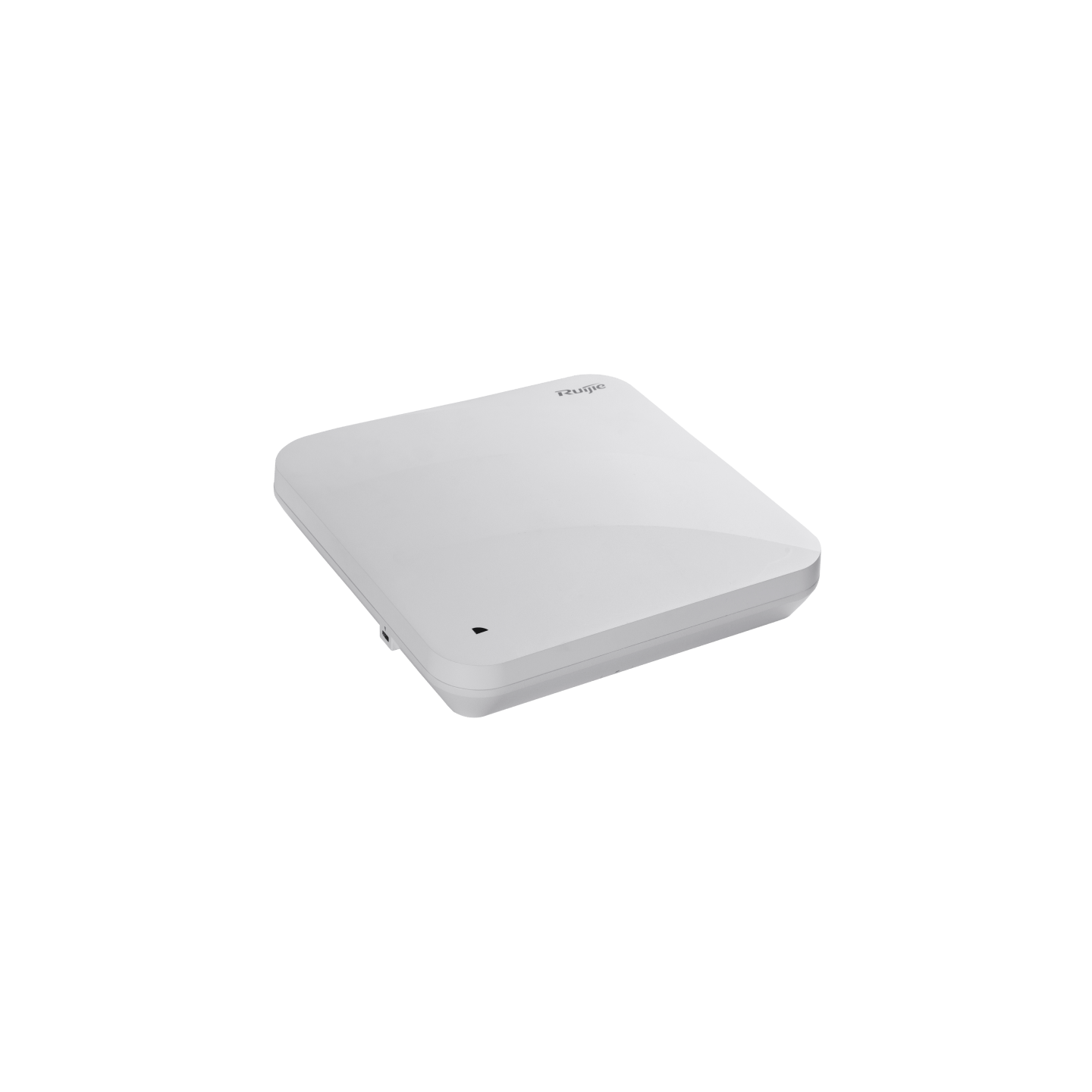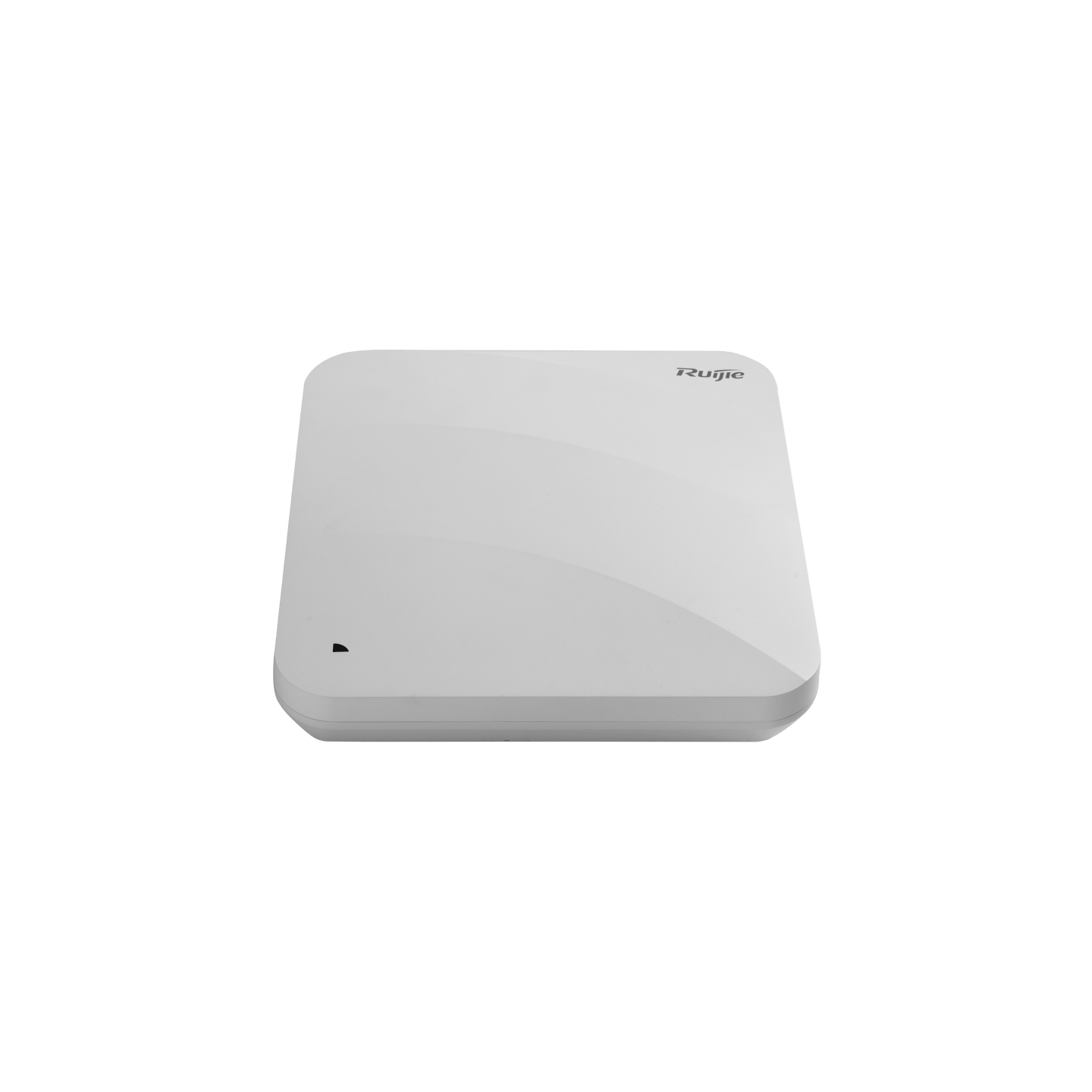Product Overview
The RG-AP880-E is a Wi-Fi 6E wireless access point that delivers tri radios, high performance, and enterprise-grade encryption. Its hybrid cloud management mode and high-density access design allow the RG-AP880-E to be flexibly deployed in high-quality network scenarios, such as classrooms, dormitories, and large venues in the education industry, outpatient clinics and mobile ward rounds in the medical industry, and large conference centers in government and commerce industries.
Product Highlights
Ultra-High Performance
Tri-band design (2.4 GHz + 5 GHz + 6 GHz), six spatial streams, 1024-Quadrature Amplitude Modulation (QAM) high-speed access, and up to 7.780 Gbps peak data rate, realizing high-speed wireless access experience
Wi-Fi 6E technology to leverage 6 GHz spectrum resources and deliver a data rate of up to 4.804 Gbps at 6 GHz radio, providing supreme wireless experience to users
RF power adjustment and intelligent channel allocation to solve the problems such as co-channel interference and adjacent channel interference, thereby improving network transmission efficiency and stability
Flexible Networking
Local and cloud management modes, and intelligent wireless network optimization, reducing TCO and maximizing ROI
Access through optical and Ethernet cables for flexible networking and high-speed backhaul over 5 Gbps wired links
IEEE 802.11k/v/r support, roaming stickiness optimization, and client steering, achieving seamless roaming and improved user experience
Rich IoT features: PoE output, Bluetooth 5.1, and wireless locating
High Security and Reliability
Encryption and authentication technologies including Wi-Fi Protected Access 3 (WPA3), enhanced open security, 802.1X, and Private Pre-shared Key (PPSK), enhancing data security
Dynamic Frequency Selection (DFS), optimizing the use of available RF spectrum to prevent radar channel interference
Cyclic Delay/Shift Diversity (CDD/CSD), Maximum Ratio Combining (MRC), Space-Time Block Coding (STBC), and Low-Density Parity Check (LDPC), improving the signal quality, signal receiving, and reliability and performance of data transmission
Transmit beam-forming (TxBF) expands the signal coverage and enhances the reliability of specific devices, thereby improving the data rate
Intelligent identification and monitoring, multicast-to-unicast conversion, and other features, enhancing network security and reliability
